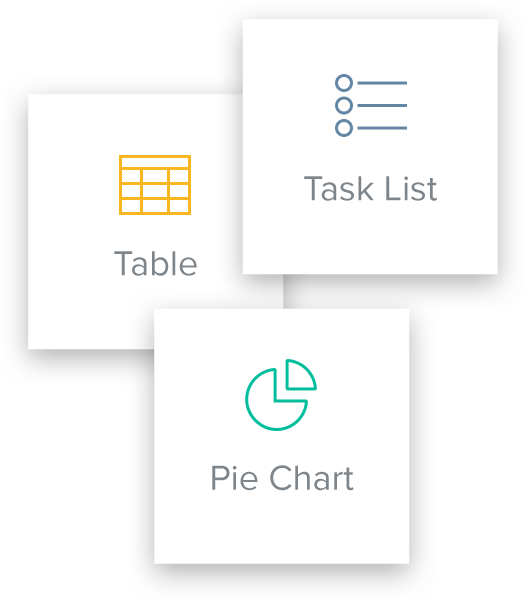50 Questions to Decode Product Requirements Documents
Updated by Xtensio
Clear and well-structured Product Requirements Documents (PRDs) are the linchpin of successful projects. According to a report by the Project Management Institute, poor requirements management is a major cause of project failure, underscoring the importance of adeptly decoding PRDs1. Whether you are a seasoned product manager, a developer, or a stakeholder keen on ensuring a streamlined product development process, this article is crafted with you in mind. Through a series of 50 incisive questions, we delve into the nuances of decoding PRDs, making this complex task a more manageable and fruitful endeavor. For instance, the celebrated launch of the Spotify app can be traced back to a well-articulated PRD that encapsulated the vision of a music streaming service that seamlessly blends discovery and accessibility. By engaging with the queries and insights presented herein, you’ll not only gain a deeper understanding of your project’s requirements but also foster a collaborative environment among your team. So, as you navigate through these curated questions, reflect on how each aspect aligns with your project’s goals and the broader organizational objectives. Your journey towards mastering the art of decoding PRDs begins here.
Table of Contents
General Aspects
1. What is a Product Requirements Document (PRD) and why is it crucial?
A Product Requirements Document (PRD) is a well-structured document that outlines the vision, objectives, and specifics of a product you plan to build. It’s like a roadmap guiding every stakeholder from conceptualization to completion, ensuring everyone’s on the same page regarding the product’s features, functionality, and expectations.
The essence of a PRD lies in its ability to provide clear, comprehensive information. It encompasses the ‘what’, ‘why’, and ‘how’ of a product, facilitating a shared understanding among the development team, stakeholders, and any other involved parties. It meticulously details the product’s features, the problems it aims to solve, its user personas, and its anticipated impact on the market.
Moreover, a PRD serves as a reference point throughout the product development journey. It helps in setting the right expectations, aligning the goals of different teams, and ensuring that the product remains on the intended course amidst evolving circumstances. It’s not just a document but a communication tool, a source of clarity amidst the inherent uncertainties of product development.
Furthermore, a well-crafted PRD contributes to efficient resource allocation. By having a clear picture of what needs to be built and why, teams can allocate resources more efficiently, avoid unnecessary revisions, and ensure timely delivery of the product.
In essence, a PRD is not a mere formality but a critical asset for successful product development. It embodies the product’s blueprint, fostering informed decisions, coherent planning, and effective communication among all involved, thus paving the path for a successful product launch.
2. What are the core components of a Product Requirements Document (PRD)?
At the heart of a Product Requirements Document (PRD) are core components that articulate the product’s vision, functionality, and how it will meet the identified needs. Here are the essential elements:
- Introduction: Outlines the product, its purpose, and its context within the broader business strategy.
- Goals and Objectives: Defines what the product aims to achieve.
- Features: Describes the product’s key features in detail.
- User Personas: Identifies the target users and their needs.
- User Stories and Use Cases: Explores how different users will interact with the product.
- Technical Requirements: Specifies any technical constraints, dependencies, or requirements.
- Interface Design: Provides sketches or mock-ups of the user interface.
- Acceptance Criteria: Defines the criteria that must be met for the product to be considered complete.
- Non-functional Requirements: Addresses aspects like performance, security, and scalability.
- Timeline and Milestones: Lays out the development schedule and key milestones.
- Glossary and Appendices: Clarifies any terminology and provides additional information.
Each component plays a pivotal role in providing a holistic view of the product, ensuring all stakeholders have a clear understanding of what’s expected, thereby contributing to the product’s success.
3. How does a PRD differ from a Feature Specification Document (FSD)?
A Product Requirements Document (PRD) sets the broad vision and objectives of a product, encompassing an aerial view of what the product aims to achieve. On the other hand, a Feature Specification Document (FSD) dives deeper into the specifics of each feature within the product. While the PRD provides a high-level overview, the FSD breaks down each feature, detailing the technical specifications, interactions, and behaviors, facilitating a more granular understanding crucial for the development team.
4. Who are the typical stakeholders involved in reviewing a PRD?
The review of a PRD is a collaborative effort involving various stakeholders to ensure its accuracy and completeness. Typically, this includes Product Managers, Developers, Designers, Quality Assurance teams, and sometimes Marketing and Sales teams. Their collective input helps in refining the PRD, ensuring it aligns with organizational goals, user needs, and technical feasibility.
5. How often should a PRD be updated and who is responsible for updating it?
The frequency of PRD updates hinges on the product’s development stage, changes in market dynamics, and feedback from stakeholders or users. It’s crucial to keep the PRD current to reflect the evolving nature of the project. Generally, the Product Manager is responsible for updating the PRD, ensuring it remains a reliable reference throughout the development lifecycle.
6. What is the role of a PRD in Agile methodologies?
In Agile methodologies, the Product Requirements Document (PRD) morphs into a living document, continually evolving with feedback loops and iterative developments. It serves as a foundational reference, guiding the sprint planning and backlog prioritization while fostering a shared understanding among cross-functional teams.
7. How does a PRD contribute to the communication between stakeholders and development teams?
A PRD serves as a communication bridge between stakeholders and development teams. It encapsulates the product vision, goals, and specifics in a structured manner, ensuring everyone has a clear understanding, which is crucial for aligning expectations, fostering collaboration, and ensuring a cohesive approach towards product development.
8. How can a PRD help in managing risks during product development?
By clearly defining the product’s features, goals, and constraints, a PRD helps in identifying potential risks early on. It aids in setting realistic expectations, ensuring alignment among teams, and providing a basis for contingency planning, thus playing a crucial role in risk management during product development.
9. What is the impact of a well-crafted PRD on the product’s time to market?
A well-crafted PRD accelerates the product’s time to market by providing clear directions, reducing ambiguities, and minimizing the need for revisions. It ensures that resources are efficiently allocated, and efforts are aligned with the product’s goals, thus streamlining the development process.
10. How can a PRD facilitate better decision-making during product development?
A PRD lays down a clear roadmap, providing a basis for informed decision-making. By articulating the product’s goals, features, and constraints, it offers a holistic view that aids in evaluating trade-offs, prioritizing features, and making decisions that align with the product’s overall objectives.
11. How can market research influence the formulation of a PRD?
Market research is pivotal in formulating a Product Requirements Document (PRD) as it provides insights into customer needs, market trends, and competitive landscapes. This data informs the product vision, features, and value proposition outlined in the PRD, ensuring it’s aligned with market realities and customer expectations.
12. How should user feedback be integrated into a PRD?
User feedback is a valuable asset in refining a PRD. It should be systematically collected, analyzed, and integrated to ensure that the product meets the users’ needs and expectations. This iterative feedback loop can significantly enhance the product’s relevance and usability.
13. How does a PRD ensure that a product remains user-centric?
A PRD enforces a user-centric approach by encapsulating user personas, user stories, and the problems the product aims to solve. By keeping the focus on user needs and experiences, it ensures that the product remains aligned with its intended value proposition.
14. How can one measure the effectiveness of a PRD?
The effectiveness of a PRD can be measured by how well it aligns the development team, clarifies the product vision, and contributes to meeting the project goals and timelines. Feedback from stakeholders and the success of the product post-launch also provide valuable metrics.
15. How does a PRD help in aligning the development and marketing teams?
A PRD provides a common framework outlining the product’s features, benefits, and target audience. This alignment enables the development and marketing teams to work cohesively, ensuring that marketing strategies resonate with the product’s objectives and features.
16. What common mistakes should be avoided when creating a PRD?
Creating a PRD requires a meticulous approach to avoid common mistakes such as vagueness, missing out on essential details, or failing to align with stakeholders. Ensuring clarity, completeness, and stakeholder alignment are crucial to avoid misunderstandings and ensure a smooth product development process.
17. What tools and software are available for creating and managing PRDs?
Various tools and software like Jira, Confluence, or Productboard can be utilized for creating and managing PRDs. These tools facilitate collaboration, version control, and easy updating, making the process more streamlined and efficient.
18. How can one ensure that a PRD remains relevant throughout the product development cycle?
Keeping a PRD relevant requires regular updates, incorporating feedback from stakeholders, and aligning it with any changes in market dynamics or project scope. A living document approach ensures the PRD remains a reliable reference throughout the product development cycle.
19. How can a PRD contribute to the project’s return on investment (ROI)?
A well-structured PRD helps in aligning resources efficiently, setting clear objectives, and ensuring that the product features are designed to meet market demands, thereby contributing to a positive ROI.
20. How to prioritize features in a PRD?
Feature prioritization in a PRD can be achieved using methods like MoSCoW (Must have, Should have, Could have, Won’t have), Kano Model, or by evaluating the impact and feasibility of each feature. This helps in aligning the development effort with the most critical and valuable features.
21. What’s the role of user personas in a PRD?
User personas in a PRD help in understanding the target users, their needs, and how the product will address those needs. They are pivotal in ensuring that the product remains user-centric and meets the intended value proposition.
22. How to handle changing requirements in a PRD?
Handling changing requirements necessitates a flexible approach, ensuring the PRD is updated accurately and timely, and communicating these changes to all stakeholders to keep everyone aligned and informed.
23. How does a PRD relate to other project documentation like Technical Specifications?
A PRD lays the foundation by defining what needs to be built and why, while Technical Specifications delve into the how. Both documents complement each other, ensuring a comprehensive understanding and execution of the project.
24. What are some best practices for maintaining a PRD?
Best practices for maintaining a PRD include regular updates, clear version control, ensuring accessibility to all stakeholders, and incorporating feedback to keep the document accurate and relevant.
25. How to ensure that a PRD is clear and understandable to all stakeholders?
Ensuring clarity in a PRD involves using simple language, avoiding jargon, providing definitions, and organizing the content in a logical, structured manner. Additionally, reviewing the PRD with stakeholders and addressing their queries can further enhance clarity and understanding.
Advancing the Conversation
26. What should be the level of detail in a PRD?
The level of detail in a PRD should be sufficient to provide clear understanding and direction while leaving room for the development team’s expertise. It should articulate the what and why of the product, outlining features, goals, user personas, and acceptance criteria, while avoiding overly technical or granular details.
27. How does a PRD support the validation of product ideas?
A PRD helps in validating product ideas by documenting the assumptions, market needs, and the value proposition of the product. It provides a structured framework to collect feedback from stakeholders, test hypotheses, and refine the product concept based on insights gained.
28. What is the relationship between a PRD and a product roadmap?
A product roadmap provides a high-level view of the product’s direction and milestones over time, while a PRD dives into the details of the product for a specific version or release. The PRD translates the broader goals from the roadmap into actionable requirements for the development team.
29. How can metrics and KPIs be incorporated into a PRD?
Metrics and KPIs can be incorporated in the acceptance criteria and objectives sections of the PRD to define success metrics, performance benchmarks, and evaluation criteria, ensuring that the product’s progress and success can be quantitatively assessed.
30. How to handle conflicting stakeholder opinions when creating a PRD?
Handling conflicting opinions involves facilitating discussions to understand differing perspectives, prioritizing based on impact and feasibility, and seeking consensus or making informed decisions to keep the project aligned with its overarching goals.
31. How does a PRD evolve from concept to launch?
A PRD evolves through iterative feedback loops, updated requirements, and refinements based on testing, stakeholder feedback, and market insights from concept to launch, ensuring it remains relevant and aligned with the product goals.
32. How can one ensure the consistency of a PRD across different product lines?
Ensuring consistency across different product lines requires a standardized template, common terminology, and a centralized process for creating, reviewing, and updating PRDs, fostering alignment and coherence across the product portfolio.
33. What considerations should be made for scalability and future growth when creating a PRD?
Considerations for scalability and future growth involve outlining the architectural, performance, and infrastructure requirements, and ensuring that the product can accommodate future expansions, user growth, and additional features seamlessly.
34. How can a PRD contribute to cross-functional team collaboration?
A PRD fosters cross-functional collaboration by providing a common reference point, aligning different teams around a shared vision and goals, and facilitating communication and coordination throughout the product development cycle.
35. How can competitive analysis influence the creation of a PRD?
Competitive analysis provides insights into market standards, emerging trends, and areas of differentiation, which can be invaluable in shaping the vision, features, and positioning outlined in the PRD, ensuring the product remains competitive and relevant.
Historical and Future Perspectives
36. What is the historical evolution of Product Requirements Documents?
Historically, PRDs have evolved from static documents to more dynamic and collaborative frameworks with the advent of agile methodologies and digital collaboration tools. They’ve transitioned from being solely text-based to including interactive elements, reflecting the more iterative and user-centric approach in modern product development.
37. How might PRDs evolve in the future?
The future might see PRDs becoming more interactive, data-driven, and integrated with real-time feedback loops. The integration of AI and machine learning could also facilitate dynamic updating and real-time analytics, enhancing the document’s adaptability and predictive capabilities. We are closely following these developments for offering our users the best experience possible.
38. What are some futuristic tools or technologies that might impact the creation and management of PRDs?
Futuristic tools could include AI-powered platforms for real-time collaboration, analytics, and automated updating. Blockchain could ensure version control and traceability, while AR/VR might enable more interactive visualization of product concepts within PRDs.
Ethical and Social Responsibilities
39. What ethical considerations are crucial when drafting a PRD?
Ethical considerations include ensuring data privacy, user safety, and inclusivity. It’s also crucial to consider the potential societal and environmental impacts of the product, aligning the PRD with ethical standards and responsible innovation principles.
40. How can a PRD address social responsibility concerns related to a product?
A PRD can address social responsibility by including sections on compliance with legal standards, ethical guidelines, and societal impact assessments. It should outline measures to ensure data privacy, inclusivity, and positive societal contributions.
41. How can sustainability considerations be incorporated into a PRD?
Sustainability can be incorporated by outlining the environmental impact, resource efficiency, and long-term viability of the product. It should also include strategies for minimizing negative environmental effects and promoting sustainable practices.
Philosophical and Daily Usage Insights
42. What philosophical considerations underpin the creation of a PRD?
Philosophical considerations include the broader impact of the product on society, the ethical implications of its features, and how it aligns with human-centered design principles. Reflecting on these aspects can contribute to creating a more thoughtful and responsible PRD.
43. How is the daily use of a PRD manifested in a product development team?
Daily use of a PRD involves referring to it for clarifications, aligning development tasks, discussing feature implementations, and making informed decisions. It serves as a common reference point for cross-functional collaboration and alignment.
44. What are the pros and cons of using a PRD?
Pros include clear communication, aligned objectives, and a structured development approach. Cons might involve the potential for rigidity, the time required for updates, and the risk of misinterpretation if not well-drafted.
45. What controversies surround the use of PRDs?
Controversies might arise from differing opinions on the level of detail, the rigidity versus flexibility of the document, and the extent to which it should dictate the development process versus allowing for creativity and innovation.
46. How might a PRD be structured to accommodate the social responsibility and sustainability aspects of a product?
Incorporating social responsibility and sustainability involves adding sections that detail the product’s environmental impact, ethical considerations, and compliance with social responsibility standards. It should outline measures to minimize negative effects and promote positive societal contributions.
47. What considerations should be made for accessibility and inclusivity when drafting a PRD?
Accessibility and inclusivity considerations include ensuring the product is usable by a diverse user base, adhering to accessibility standards, and addressing different user needs and abilities within the PRD to promote a more inclusive product design.
48. How can philosophical principles related to ethics, values, and human-centric design be integrated into a PRD?
Integrating philosophical principles involves reflecting on the product’s broader societal impact, aligning it with ethical values, and incorporating human-centric design principles to ensure the product positively contributes to individuals and society.
49. How does daily interaction with a PRD influence the workflow of a product development team?
Daily interaction with a PRD provides clarity, aligns tasks, and facilitates informed decision-making, thus influencing the workflow by keeping the team focused and aligned with the product’s objectives.
50. What are some of the debates surrounding the pros and cons of using PRDs in modern product development?
Debates surrounding PRDs often revolve around their relevance in agile environments, the level of detail they should contain, and how they can balance providing clear requirements with allowing flexibility and innovation in the development process.
BONUS: Creating and Sharing PRDs with Xtensio
51. How does Xtensio facilitate the creation of PRDs?
Xtensio provides a platform for product managers to plan, strategize, and communicate ideas effectively, aiding in the creation of comprehensive PRDs.
52. Can Xtensio’s templates be customized for different projects?
Yes, Xtensio offers customizable templates to cater to the unique requirements of different projects.
53. How does Xtensio support collaboration among team members?
Xtensio’s platform is designed for collaborative work, allowing team members to brainstorm and build content together.
54. Can Xtensio help in organizing and prioritizing features in a PRD?
With its user-friendly platform, Xtensio can help in organizing and prioritizing features effectively in a PRD, just by dragging and dropping items.
55. How does Xtensio ensure that the PRD remains a living document?
Xtensio’s ease of customization and intuitive platform keep the PRD adaptable and relevant throughout the product development cycle. It lets PM’s share PRD’s in 9 different ways.
56. Can Xtensio integrate with other project management tools?
Xtensio folios are living, interactive documents, you can include content from your favorite apps, platforms and sites.
57. How can Xtensio assist in visualizing product concepts within a PRD?
Xtensio’s interface and PRD templates help in visually representing product concepts within a PRD.
58. Does Xtensio provide any resources or guidance on best practices for creating PRDs?
Xtensio offers resources or guidance on creating effective PRDs and other collateral for Product Managers. Learn Product Management with Xtensio
59. How does Xtensio accommodate feedback from stakeholders in the PRD?
Xtensio’s collaborative platform facilitates the collection and incorporation of feedback from stakeholders within the PRD. everyone can be added to the same PRD and finalize it together.
60. Can Xtensio aid in evaluating the success of a product post-launch?
Xtensio’s templates help with researching, evaluating, and reporting every aspect of product management.













